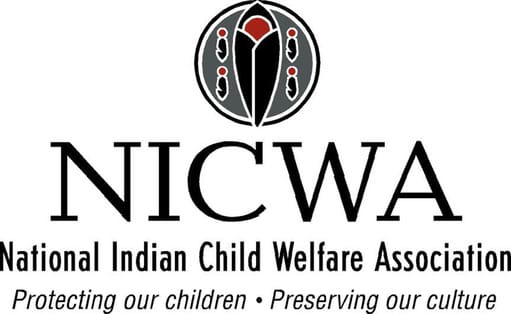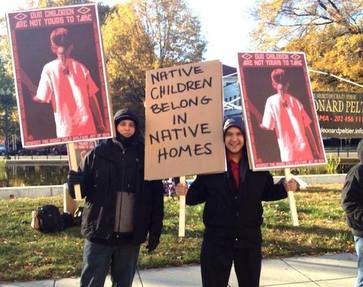Fighting back
 Native Americans fighting back against the colonists. (Native American Warriors and Battles, N.d.)
Native Americans fighting back against the colonists. (Native American Warriors and Battles, N.d.)
There was uprising by some tribes along the eat coast of Georgia. It was called the Yamasee Rebelion of 1715 (Kidwell, N.d.). The Yamasee is a part of the Muskhorean language group. Their homelamd is where present day Florida and Georgia are located now. They were forced by the White Settlement to migrate north. The Yamasee became dependent on English firearms and other manufactured items, this left the Yamasee with a large amount of debt, where the payment was in deerskins. Sometimes the white settlers enslaved Yamasee women and childern to cover some of the debt (“The Yamasee War”, N.d.).
In the spring of 1715 the Yamasee formed a confederation with other tribes and attacked the white settlements. Several hundered settlers were killed, homes were burned, and livestock were slaughtered. The Yamasee could have destroyed all of the White settlemet region, but the tides turned on the Yamasee and the settlers won (“The Yamasee War”, N.d.).
In the spring of 1715 the Yamasee formed a confederation with other tribes and attacked the white settlements. Several hundered settlers were killed, homes were burned, and livestock were slaughtered. The Yamasee could have destroyed all of the White settlemet region, but the tides turned on the Yamasee and the settlers won (“The Yamasee War”, N.d.).
Influence of The Settlers
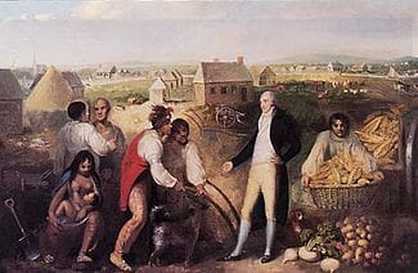 A picture showing how the Native Americans started to assimilate to the European ways. (Cultural Assimilation of Native Americans, N.d.).
A picture showing how the Native Americans started to assimilate to the European ways. (Cultural Assimilation of Native Americans, N.d.).
During this Tribes moved southeast, to new lands in the west and entered an economic system that made the life they were living a more valuable one. They domesticated animals, such as horses, cattle, and pigs. These animals replaced the game that they were use to hunting for trade. Coal and Oil deposits in the Choctaw territory provided wealth for them. They also had to adapt to new environments. They had to adapt to an system where they exploited natural resources for economic development. Since they had to make these adaptions this changed the relationship of Indian people to their land in an economic sense. (Kidwell, N.d.).
(Study.com, 2013)
rights for native americans
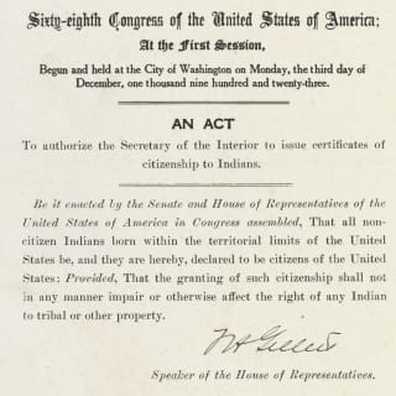 A picture of the legislature granting Indians from certain areas citizenship. (Native American Citizenship 1924, N.d.)
A picture of the legislature granting Indians from certain areas citizenship. (Native American Citizenship 1924, N.d.)
After the Native American Genoicde was done with, the Native Americans recienved civil rights and legal rights such as:
- In 1924 the U.S. congress passed the Indian Citizenship Act ("Atrocities Against Native Americans", N.d.). The Citizenship Act stated, "BE IT ENACTED by the Senate and house of Representatives of the United States of America in Congress assembled, That all non citizen Indians born within the territorial limits of the United States be, and they are hereby, declared to be citizens of the United States: Provided That the granting of such citizenship shall not in any manner impair or otherwise affect the right of any Indian to tribal or other property. (Approved June 2, 1924) (“1924 Indian Citizenship Act”, N.d.).
- They gained voting rights in the Voting Rights Act of 1965 ("Atrocities Against Native Americans", N.d.).
- In 1968 the Indian Civil Rights Act was passes. This act gave the Natives the right to free speach, the right to a jury, and protection from unreasonable search and seizure ("Atrocities Against Native Americans", N.d.).
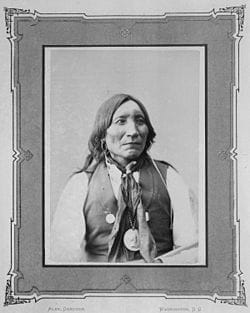 A portrait of Lone Wolf. (Lone Wolf V. Hitchcock, N.d.)
A portrait of Lone Wolf. (Lone Wolf V. Hitchcock, N.d.)
- The supreme court ruled that The U.S, federal government has the right to overturn all Cherokee laws in the precediant- setting decision. The Cherokee Nation vs. Hitchcock case was the case that determined this. The Cherokee Nation vs. Hitchcock case, also known as the Lone Wolf vs. Hitchcock was a court case that was brought against the U.S. government by the Kiowa Cheif Lone Wolf. He charged the Native American tribes under the Medicine Lodge Treaty. They had been defrauded of land by congressional actions in violation of the treaty (“Lone wolf v. Hitchcock,” 2015).
|
(AmericanHistoryRules, 2009)
